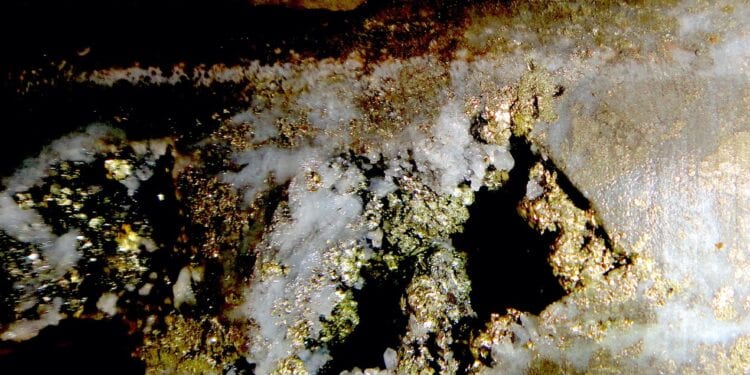Target C Returns 8.0m Averaging 16.48 g/t Au in Dominican Republic
Unigold Inc. (TSXV:UGD) has received promising results from its ongoing exploration drilling at the Candelones Extension deposit, part of the company’s 100% owned Neita Concession in the Dominican Republic.
A total of 11 holes (3751m) of the planned 15,000m drill programme have been completed to date.
Drilling is currently testing epithermal mineralisation at Targets B and C of the Candelones Extension. The proposed drilling is designed to increase the geological confidence for future mineral resource estimates and to test for extensions of the high-grade targets at depth and along strike.
Drilling at Target C is focused on tracing an interpreted fault structure which has been intruded by a late mafic dike.
Chairman and CEO, Joe Hamilton, said high-grade gold and silver with associated copper and zinc mineralisation is localised at or near the contact of the magnetic dike suggesting that this could represent a potential marker horizon to guide future drilling.
“These initial results continue to demonstrate the exploration potential of the Candelones Project and our increasing knowledge base which is evolving with each drill hole,” Mr Hamilton said.
“The systems at Candelones remain open, and drilling is identifying new zones in unexpected areas.
“LP20-160 intersected the high grade mineralisation 90m higher than anticipated. We interpret that the high-grade mineralissation is fault offset towards surface in the system.
“This new intercept is within 125 meters of surface. The location of the mineralisation indicates that there is a 150 to 200mvertical gap in drill coverage along the andesite-dacite contact below this intercept.
“The interpreted sub-vertical faulting, intensity of brecciation and presence of mafic dikes make this gap in drill coverage a high priority target for additional drilling, especially in light of the grades intersected in our latest hole.
“The close spatial association of high grade mineralisation with late, barren mafic dikes is evolving into a possible targeting tool that we hope to exploit in future drill planning.
“Several mafic dikes have been identified in the hanging wall andesites and we are currently projecting these to the andesite-dacite contact where we believe further high-grade mineralisation may be localized.
“We continue to successfully monitor the ongoing drill program. Assay results have been delayed to date but we expect that new results will now be received on a regular basis.
“We are continuing to step out from the known high-grade mineralisation in 25 to 50m increments as we seek to expand the footprint of mineralisation.
“Once sufficient analytical results are available, we will be able to adjust the drill plan to target the highest-grade mineralisation in undrilled areas.”
Hole LP20-160 (Target C) was collared 20m east of LP57 (12.99m averaging 5.95 g/t Au, 4.2 g/t Ag, 0.07% Cu and 0.70% Zn) and 20 meters west of LP91 (9.0m @ 3.0 g/t Au).
LP20-160 intersected the target mineralisation 90m higher in the system than anticipated. Mineralization occurs in a silicified dacite tuff breccia showing a silica-barite matrix with up to 15% sulphides.
The mineralisation is localized in the footwall of a mafic dike possibly highlighting a reactivated fault system that served as a conduit for mineralisation. The dip of the andesite-dacite contact steepens abruptly, likely the result of faulting.
Hole LP49, collared in 2013 about 200mto the south of LP20-160, stopped short of the andesite-dacite contact. The mineralizsation intersected in LP20-160 suggests that the entire length (150m) of the sub-vertical contact may be prospective for additional high grade mineralisation












